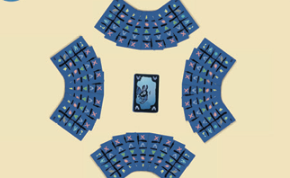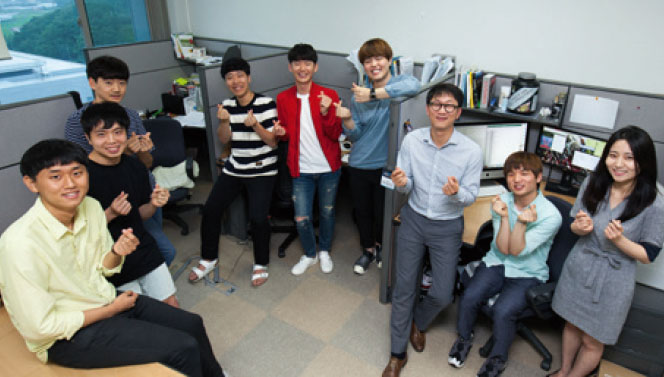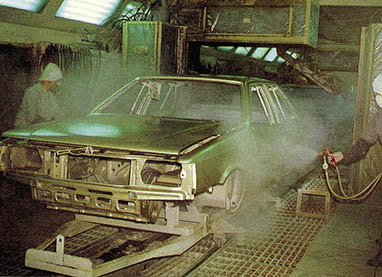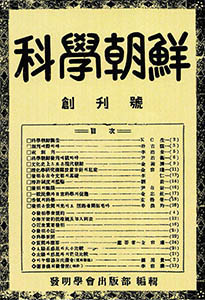'복제'(複製)란 과히 멋진 낱말은 아니지만 행동으로 옮기게 되면 모든 가능한 생명의 아름다움을 창조한다. 복제란 '복사본을 만든다' '반복하다' '응답하다' 등으로 정의될 수 있다.
자연복제현상에서 많은 다세포동물들은 그들의 똑같은 복사본을 만들지는 않는다. 그들의 복제는 유성생식의 산물로 나타나므로 그 결과인 새끼는 독특하다. 다른 생물체들은(특히 많은 곤충들의 경우) 똑같은 복사본, 즉 클론을 만들 수 있는데 이것은 한 어미의 무성생식으로 형성된 유기체를 말한다.
이와같은 복제의 두 방법들은 실제적으로 세포차원에서 발생한다. 무성인 세포의 '유사(有絲)분열'은 DNA를 갖고 있는 염색체들이 두배로 늘어난 후 각 세포들은 원래의 세포와 똑같은 형태로 둘로 나뉜다.
세포내의 염색체들이 두배가 되지 못하면 유전자물질의 '생략'된 다른 한쪽과 함께 나눠진다. 이것은 '감수(減數)분열'이라(그리스어로부터 유래된 것으로 '적게 만든다'는 뜻임) 불린다. 정자가 난자를 수정시키면 새 유전자들의 복합체로 이중나선구조가 복구된다.
유사분열이든 감수분열이든 간에 뜻밖의 변화가 나타날 수도 있다. 유전자들이 돌연변이를 일으킬 수 있고 염색체들이 적절하게 분리되지 않을 수도 있다. 과학자들은 최근 세포분열의 생화학을 연구중이다. 예를 들어 그들은 '세포분열관련 단백질(cdc2)'을 찾아냈는데 이는 '사이클린'이라는 또 다른 단백질의 도움을 받아 유사분열을 일으키는데 핵심적인 역할을 수행한다. 연결된 단백질에서 변화가 일어나 세포핵 둘레에 막을 형성함으로써 궁극적으로는 세포분열이 가능토록 만드는 것이다. cdc2 단백질은 모든 세포들에서 나타나기 때문에(사람의 cdc2 단백질은 가장 원시적인 효모와 63% 동일하다고 알려져 있다) 어쩌면 지구상의 세포형 생명체들의 초기시대까지 돌이켜볼 수 있을 것이다. 세포의 분열증식 과정에 나타나는 변화를 통제하는 또 다른 단백질도 검토되고 있고 이것은 세포분열증식과정이 비틀린 경우에 해당하는 암연구에 중요하게 활용될 수 있을지도 모른다.
모든 자연세포분열은 염색체 내의 핵산이 자기복제됨으로 가능하다. 2년전 줄리우스 레벡과 두명의 다른 유기화학자들은 핵산보다도 더 간단한, 자체적으로 복제하는 분자를 만들었다. 그것은 당시 뉴스거리가 됐는데 그 활동이 원시시대 지구의 최초의 자기복제분자와 닮은 까닭이었다.
작년에 취리히와 스트라스버그에 살고 있는 과학자들이 전기로 충전된 중합성분자의 콜로이드 입자들로 합성세포를 만들었다. 중합체는 많고 조그마한 분자들들 합성해 녹말이나 단백질이나(사람이 공장에서 만드는) 나일론처럼 하나의 크고 복잡한 분자를 만드는 것이다. 이렇게 새롭게 만들어진 합성세포들은 화학반응이 보다 많은 합성체를 만들어 막을 형성할 때 복제된다. 과학자들은 생명이 본질적으로 폐쇄된 계(係)로서 어떤 한계에 의해(막처럼) 환경으로부터 분리되고 그 한계내에서 복제되고 있다고 주장한다.
최근 레백은 홍종인, 큉팽, 빈센트 로텔로와 함께 서로 밀접하게 연관돼 함께 존재하고 서로의 복제를 돕는 두개의 합성복제형 분자들을 개발했다. 이중 하나의 분자를 적외선에 노출시키면 돌연변이가 일어나 복제가 더 자주 이뤄진다. 이렇게 돌연변이로 탄생하는 분자는 다른 빛을 쬐지 않는 분자보다 주변환경으로부터 복제를 위한 재료를 확보하는데 더욱 적극적이다. 그래서 이 돌연변이 분자는 곧 다른 분자를 소멸시켜 버리는데 이는 진화론적인 '적자생존'의 원칙과 유사한 것이다.
이와같은 합성분자들은 우리가 알고 있는 바 지구상의 생명체보다 앞서 존재했던 것은 아니지만 레백이 말하듯이 '지구 생명체의 시초와 똑같은 반응(복제, 협동 및 돌연변이)'을 보인다.
한편 또 다른 합성생명체들도 컴퓨터 연구과정을 통해 탄생중이다. 문제를 풀기 위해 자체적으로 진화하는 프로그램들이 짜여졌다. 또한 스스로 복제해 번져나가고 마치 비밀스러운 '바이러스들'처럼 정상적인 프로그램을 망치는 컴퓨터 프로그램도 있다. 최근 컴퓨터과학자들은 스스로 복제하는 프로그램들이 복제현상을 보다 효율적으로 하도록 돕는 방법을 찾아내기도 했다. 바이러스 때문에 고통당하는 하드디스크 조차도 없었던 필자의 첫 컴퓨터 사용시절에 비해 엄청난 변화가 있었던 셈이다.
자연적이거나 합성된 것이거나(화학적이건 컴퓨터에서건) 복제라는 개념의 변화는 특히 유기화학이나 생화학과목을 택한지 꽤나 오래된 경우라면 가히 놀랄만한 것이 된다. 지난 1992년 6월 뉴멕시코주의 산타페시에서는 인공지능학술대회가 개최됐다. 그땐 '하드웨어'(컴퓨터, 포켓계산기 그리고 반도체 기기들)을 날이 따로 있었다. 또한 '소프트웨어"(워드프로세서처럼 우리가 원하는 작업을 수행하도록 해주는 컴퓨터 명령어들)의 날도 있었다.
그런데 신비스러운 점은 그 학술대회중에 레백박사 같은 과학자들로부터 영양분을 제공받은 합성복제분자들을 의미하는 '웨트웨어'의 날도 있었다는 점이다. 또한 인공지능'4-H전시회'도 있었는데(마치 시골의 농산물 전시장처럼) 여기에선 과학자들이 자신들이 가장 좋아하는 인공지능의 형태를 전시했다.
언젠가 멀지않아 과학자들은 이러한 그들의 모든 노력으로 어쩌면 합성화학 '생명체'를 컴퓨터 '생명체'와 결합시켜 스스로 진화할 수 있는 살아 움직이는 생명체를 만들는지 모른다. 이것이 우주의 침묵에 대한 인류의 최종적인 '반응'이 될까?
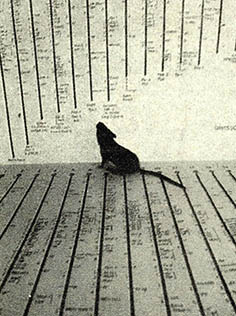
"Replication" isn't a beautiful word, but in action it makes all the beauty of life possible. Replication can be defined as "making a copy," "repetition" or "making a reply."
In natural replication, large multicellular animals do not make exact copies of themselves. Their replication occurs as a product of sexual reproduction, so the resulting offspring is unique. Other animals(notably many insects) can make an exact copy, or clone-an organism formed nonsexually from one parent.
These two ways of replication actually occur on the cellular level. In asexual "mitosis," the DNA-containing chromosomes double, then the cell divides so that each daughter cell is exactly like the original.
When the chromosomes of a cell don't double, the cell divides with a "haploid" complement of genetic material. This is called "meiosis" (from a Greek word meaning "to make less"). As a sperm fertilizes an egg, the double helix is restored, with a new mixture of genes.
Unexpected changes can occur in either meiosis or mitosis. The genes themselves can mutate, or the chromosomes may not split properly. Scientists ard currently working on the biochemistry of cell division. For instance, they've discovered a "cell division cycle protein"(cdc2) which, with the help of another protein called "cyclin," plays a key role in mitosis. Changes occur in the linked proteins that line the membrane around the cell's nucleus, presumably so the cell can then divide. Since cdc2 protein occurs in all cells (human cdc2 protein is said to be 63 percent similar to that of the most primitive yeast!) it probably goes back to early days of cellular life on earth. Other proteins controlling the various changes in the cell cycle are being investigated, and may have important applications in the research of cancer, where cell cycles go away.
All natural cell division is possible through the self-replication of nucleic acids in chromosomes. Two years ago, Julius Rebek Jr. and two other organic chemists produced a self-replicating molecule simpler than nucleic acid. It made the news because its action may resemble primordial Earth's first self-replicating molecules.
Last year scientists in Zurich and Strasbourg constructed synthetic micelles-electrically charged colloidal particles of polymeric molecules. A polymer is a combination of many small molecules to make one large, complex molecule-like starch, proteins and(in human factories) nylon. The newly constructed micelles replicated when chemical reactions produced more compounds to form their membranes. The scientists speculate that life is essentially a closed process, separated from the environment by a boundary(like a membrane), replicating itself from within its own boundaries.
Recently Rebek, with Jong-In Hong, Qing Feng and Vincent Rotello, developed two closely related, synthetic replicating molecules that co-exist and help each other's replication. Exposure of one of the molecules to ultraviolet light caused a "mutation" that enabled it to replicate more often. The mutated molecule could outdo the non-irradiated molecule in taking from its environment the raw materials for replication. Soon the mutated molecule eclipsed the other, similar to an evolutionary "survival of the fittest."
These synthetic molecules are not those which predated life as we know it on Earth, but they express, as Rebek says, "the same behavior(replication, cooperation and mutation) as those that were."
In the meantime, another sort of synthetic "life" goes on in computer research. Programs have been devised that can evolve independently to solve problems. Then there are self-replicating computer programs that start spreading and, as secret "viruses," can bollix up legitimate programs. Lately computer scientists have found a way to help self-replicating programs replicate more efficiently. Quite a change from the days of my first computer, which didn't even have a hard disk to get virus-ridden.
The change in ideas of replication, both natural and synthetic (chemical or computer), is mind-boggling, especially to one whose courses in organic chemistry and biochemistry were umpty-ump decades--er--years ago. In June 1992, Santa Fe, N.M., hosted a conference on artificial life. There was a day for "hardware"(computers, pocket calculators and other chip-driven gadgetry). Then there was a day for "software"(the computer instructions that make hardware do the work you want it to do, like a word processing program).
Most amazing, the conference also had a day for "wetware," the synthetic replicating molecules nurtured by the likes of Dr. Rebek. There was even an artificial life "4-H Show" (as in rural livestock exhibits), during which scientists showed their favorite forms of artificial life.
Someday soon, perhaps, scientists of all these persuasions will combine synthetic chemical "life" with computer "life" to produce a living being that can evolve. Will this be the ultimate "reply" our human life gives to the silence on the universe?





